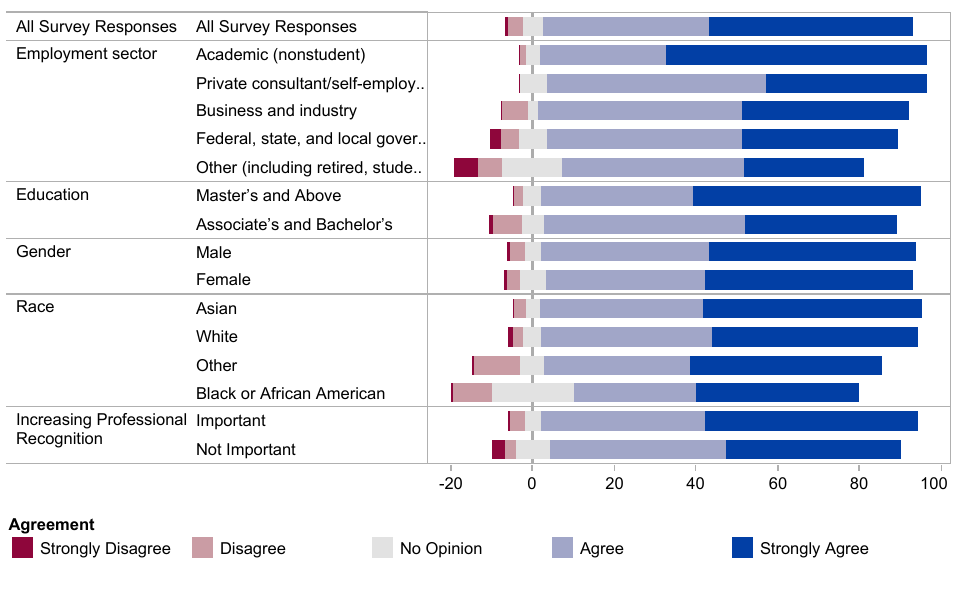Likert Scale
Likert Scale is a popular tool to get a sense of how a given audience agrees or disagrees to a series of statements. This post takes a brief look at what’s invlovled in creating these questionnaires and how the results could be interpreted. This is a widely used tool and will seem familiar to most people.
A questionnaire similar to the one above 1 is prepared, and audience members are asked to select one of available options indicating their level of agreement or disagreement. The weight assigned to each option while evaluating responses is subjective. Usually the difference between weights assigned to each consecutive option is assumed to be the same. Equal number of options are provided for cases of agreement and disagreement, and often a neutral option is also provided.
Users may not answer the questionnaire honestly causing the results to be unreliable, and some care needs to be taken to prevent this as much as possible. For example users may avoid selecting extreme options, or may answer in such a way as to portray themselves or the surveyer in a particular way. Agreement bias 2 can also affect responses to the questionnaire. This can be fought off by avoiding statements in the questionnaire and asking direct questions instead. Or by supplementing each question by another question which takes a opposite stand, in which case someone agreeing with both questions can be considered to be an invalid response and ignored.
Interpretation
Responses to the questionnaire can be analysed either individually, or by aggregating all responses. Plotting the aggregate data can help to understand the questionnaire responses better. Often the audience is divided into different categories, enabling analysis and comparison of responses from different categories as shown below. Robbins and Heiberger have published an easy to follow paper on plotting Likert-type data that is well worth taking a look at3.

-
Sourced from Wikipedia, licensed under CC BY-SA 3.0 ↩
-
Agreement Bias at Wikipedia ↩
-
Image taken from this dashboard. Paper discussing plotting Likert Scale is available here ↩